JFK's Assassination: What to Know About the President's Death 60 Years Ago
- Oops!Something went wrong.Please try again later.
- Oops!Something went wrong.Please try again later.
- Oops!Something went wrong.Please try again later.
- Oops!Something went wrong.Please try again later.
President John F. Kennedy was assassinated on Nov. 22, 1963, while driving in his motorcade in downtown Dallas
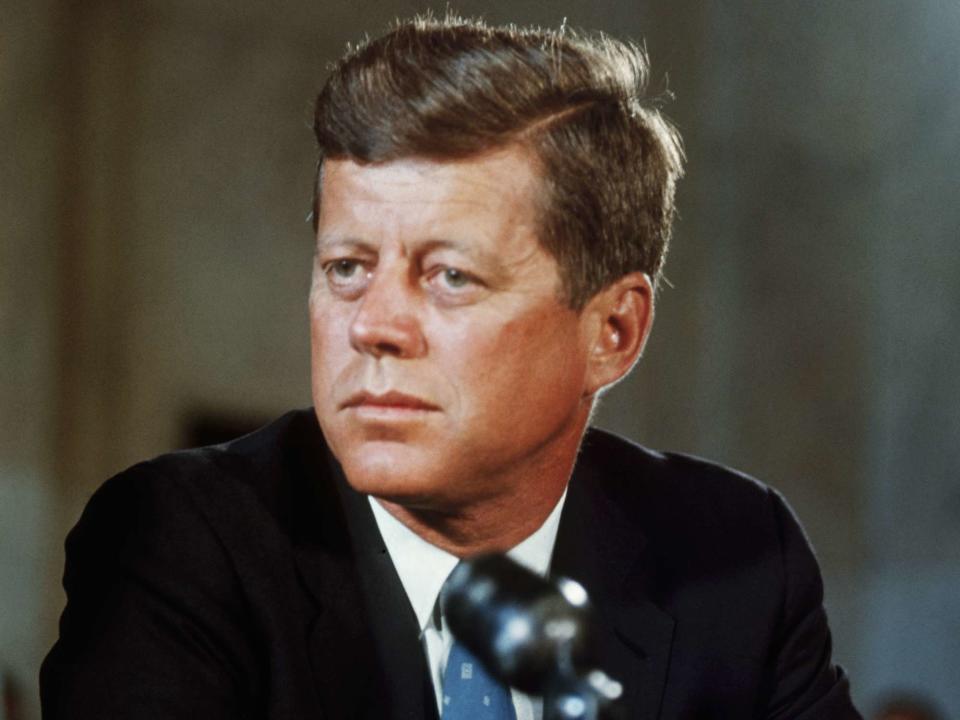
Bettmann
President John F. Kennedy at his desk in the White House on his first day in office as President of the United States.On Nov. 22, 1963, President John F. Kennedy’s assassination shocked the nation — and 60 years later, his death and legacy continue to captivate the country.
At the time of his death, Kennedy was the youngest man ever elected President of the United States. The 46-year-old father of two — his daughter, Caroline Kennedy, was about to turn 6, and his son, John F. Kennedy Jr., was about to turn 3 — was preparing to run for reelection in 1964, and the November 1963 trip to Texas was viewed as an informal kickoff to his campaign. Over two days, JFK and his wife, Jackie Kennedy, planned to visit five cities in Texas. On Nov. 21, 1963, the Kennedys made stops in San Antonio, Houston and Fort Worth. The following day, the president and first lady arrived in Dallas shortly before noon.
The events that followed on Nov. 22, 1963, have become permanently ingrained in American history. JFK was shot and killed by Lee Harvey Oswald as the presidential motorcade drove through downtown Dallas, sending the country into a spiral of shock and devastation.
“On November 22, 1963, the United States lost its innocence,” one eyewitness recalled in the 2023 documentary JFK: One Day in America.
And while the initial grief over Kennedy’s assassination has dissipated, the country continues to be fascinated with his death — even six decades later.
So what really occurred on that day in history? Here is a closer look at what happened when John F. Kennedy died and the lasting legacy he left behind.
How did President John F. Kennedy die?
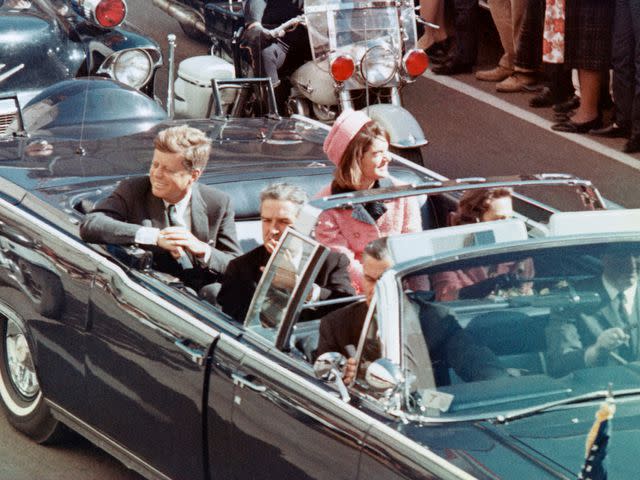
Bettmann
US President John F Kennedy, First Lady Jacqueline Kennedy, Texas Governor John Connally, and others smile at the crowds lining their motorcade route in Dallas, Texas, on November 22, 1963.Kennedy was assassinated while traveling in a motorcade through Dallas with his wife, Jackie, Texas Gov. John Connally and his wife, Nellie Connally. As their open-topped limousine turned into Dealey Plaza in downtown Dallas, Oswald opened fire with a rifle from a sixth-floor window at the Texas School Book Depository.
Oswald fired three shots, two of which hit Kennedy: The first bullet struck the president in the back and exited through his throat, and about five seconds later, the second delivered what would be a fatal blow to the head, according to the Warren Commission Report, the government’s official findings on JFK’s assassination.
“Thinking back, I’ll never forget those shots — ‘Pow. Pow. Pow,’ ” one eyewitness said in the National Geographic documentary JFK: One Day in America.
The motorcade sped to the hospital, with Jackie cradling her husband’s gravely wounded body in her lap. Clint Hill, the U.S. Secret Service agent assigned to the first lady, recounted the devastating scene in the documentary.
“I jumped to the rear bumper,” he said. “Mrs. Kennedy was screaming, ‘I love you, Jack.’ ”
The motorcade arrived at Parkland Memorial Hospital, where emergency room doctors attempted to revive the president. But after his condition was deemed “hopeless,” according to the Warren report, and after a Catholic priest administered last rites, Kennedy was pronounced dead. The autopsy recorded his official cause of death as a gunshot wound to the head.
When did President John F. Kennedy die?
Oswald shot JFK at about 12:30 p.m. CT on Nov. 22, 1963. Kennedy was officially pronounced dead around 30 minutes later, at 1:00 p.m. CT.
Where did President John F. Kennedy die?
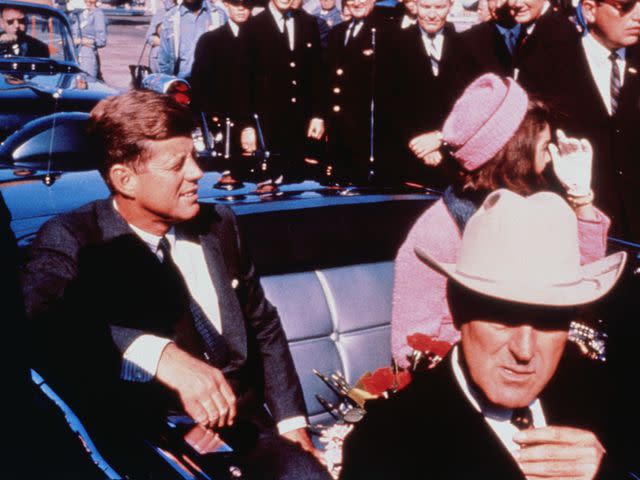
Bettmann
US President John F Kennedy, First Lady Jacqueline Kennedy, Texas Governor John Connally, prepared for motorcade into the city from the airport in Dallas, Texas, on November 22, 1963.Kennedy was shot while his motorcade was traveling on Elm Street in downtown Dallas. He was officially pronounced dead at Parkland Memorial Hospital, just north of Dealey Plaza.
How old was President John F. Kennedy when he died?
JFK was 46 years old at the time of his death.
Who killed President John F. Kennedy?

Kypros/Getty
Lee Harvey Oswald in a mug shot after he was arrested for assassinating President John F Kennedy.JFK was shot and killed by Lee Harvey Oswald, a 24-year-old former U.S. Marine originally from New Orleans. Oswald’s father died two months before he was born, and his mother, Marguerite, divorced her second husband when Oswald was 9 years old. A psychiatrist in juvenile detention assessed 12-year-old Oswald and reported that he was “emotionally disturbed,” according to the House Select Committee on Assassinations.
At 17, Oswald dropped out of high school and joined the U.S. Marines. He was disciplined three separate times during his service and, in 1959, obtained a release from the Marines, citing his mother’s ill health and financial situation. In September 1959, Oswald defected to the Soviet Union — where he lived for three years, attempted to become a citizen and met his wife, Marina.
Oswald and Marina married in 1961, had their first daughter in February 1962 and moved to Texas in June 1962. In March 1963, he purchased the rifle and telescopic sight tool that he would later use to assassinate JFK. In October of that same year, the couple had their second daughter, and Oswald began working at the Texas School Book Depository — just over a month before he fired three shots from the building’s sixth floor and killed Kennedy.
What were President John F. Kennedy’s last words?

Frank Hurley/NY Daily News Archive/Getty
John F. Kennedy and his wife, Jacqueline, ride up Broadway in a ticker-tape parade.JFK spoke his last words as the motorcade drove through Dealey Plaza in downtown Dallas. According to Four Days in November: The Assassination of President John F. Kennedy — a historic account of the events written by Vincent Bugliosi — the crowds along either side of the street greeted the president with loud cheers as his limousine turned into the plaza.
“Mr. President, they can’t make you believe now that there are not some in Dallas who love you and appreciate you, can they?” Nellie Connally, the first lady of Texas, asked JFK as they drove through the cheering crowds, per Four Days in November.
Kennedy responded with what would be his final words: “No, they sure can’t,” he said as he waved and smiled at the crowds. Oswald fired just minutes later.
What happened after President John F. Kennedy’s assassination?
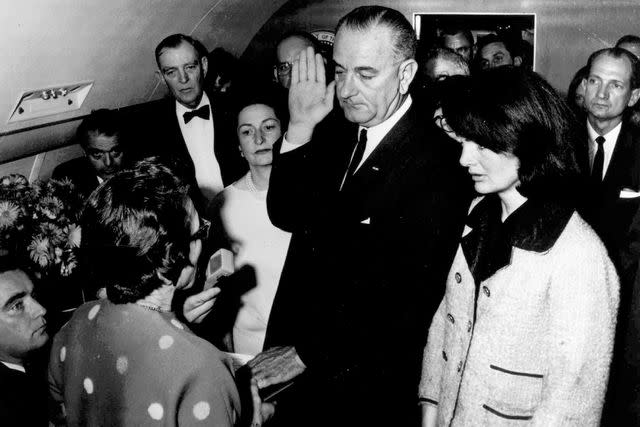
Nearly 40 minutes after Kennedy was pronounced dead at Parkland Memorial Hospital in Dallas, Walter Cronkite delivered his news bulletin — announcing to the public that the president had been killed, visibly holding back tears. The event sent shockwaves and devastation throughout the country, with the front page of The Boston Globe bearing the headline “SHOCK…DISBELIEF…GRIEF” the day after Kennedy’s death.
JFK's Vice President Lyndon B. Johnson was sworn in as the 36th President of the United States aboard Air Force One just hours after JFK's death. Still wearing her blood-stained pink suit, Jackie stood by LBJ's side as he took the oath of office.
"She went out in her blood-stained suit and stood next to Lyndon Johnson," said historian Steve Gillon. "Despite these horrible circumstances, she was willing to stand for a photo because she understood what it meant for the nation to have continuity in government. She understood that she had a role to play in helping the nation transition to a new president."
Gillon continued, "They wanted to get those photographs out on the wire services while the plane was still flying back to Washington, to reassure the American people that we had a new president."
The country plunged into mourning in the days that followed. The three major U.S. television networks at the time — ABC, NBC and CBS — suspended all commercials and switched to continuous news coverage for more than 70 hours following JFK’s assassination, according to The New York Times.
“It was a death that touched everyone instantly and directly; rare was the person who did not cry that long weekend,” CBS correspondent Roger Mudd wrote about JFK’s death in his 2008 book The Place to Be: Washington, CBS, and the Glory Days of Television News.
Kennedy's state funeral was held on Nov. 25, 1963 — JFK Jr.'s third birthday — at St. Matthew's Cathedral in Washington, D.C., and the late president was laid to rest at Arlington Memorial Cemetary.
In the 60 years since, many conspiracy theories about Kennedy's assassination have emerged. Some of the most popular theories over the years have suggested there was a second shooter located on the grassy knoll of Dealey Plaza, and the CIA and Vice President Lyndon B. Johnson orchestrated the assassination. However, these theories have been discredited.
What legacy did President John F. Kennedy leave behind?
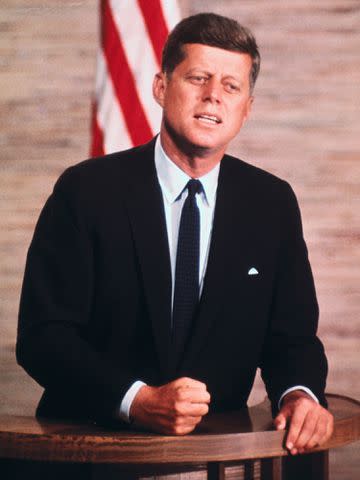
Bettmann
President John F. Kennedy.Kennedy’s assassination became one of the most defining moments of the 20th century, with the question “Where were you when JFK was shot?” emerging as a popular query in the decades that followed. His death was such a momentous event that, as of September 2011, 95% of Americans born in 1955 or earlier could still recall exactly what they were doing at the moment he was killed, according to the Pew Research Center.
The fascination with Kennedy’s assassination remains six decades later. In December 2021, the National Archives released some 1,500 pages of previously classified documents related to Kennedy’s death at the urging of several family members of the late president. The documents were originally supposed to be declassified in 2017, but then-President Donald Trump postponed their release for four years — and President Joe Biden delayed their release once more in October 2021.
“I think for the good of the country, everything has to be put out there so there’s greater understanding of our history,” former Rep. Patrick Kennedy, JFK’s nephew, told Politico about the document release.
But Kennedy’s legacy extends beyond the circumstances of his death: His presidency has also been remembered by the public as one of the greatest in modern history. Though he served less than one term, Kennedy has consistently been ranked one of the most popular presidents since World War II — with a 2013 Gallup Poll finding that nearly three-quarters of Americans considered JFK to be an outstanding or above-average president.
JFK has also been immortalized in pop culture: countless books have been written about Kennedy’s life and death; movies, including Oliver Stone’s controversial film JFK (1991) and the TV drama Killing Kennedy (2013), have depicted his assassination; and podcasts and documentaries — including the 2023 National Geographic miniseries JFK: One Day in America — have provided a closer look at the events surrounding his death.
Helping to shape Kennedy’s lasting legacy was his wife, Jackie. Immediately following JFK’s funeral, the widowed mother of two invited a Life magazine journalist to the Kennedy family compound in Massachusetts to discuss her husband’s three years in the White House. During this interview, Jackie invented the Camelot myth, referencing JFK’s favorite Broadway musical.
“She wanted to be sure he was remembered as a great President,” her longtime Secret Service agent Hill, who was present for the interview and later published his memoir Mrs. Kennedy and Me, told PEOPLE.
What happened to Lee Harvey Oswald?
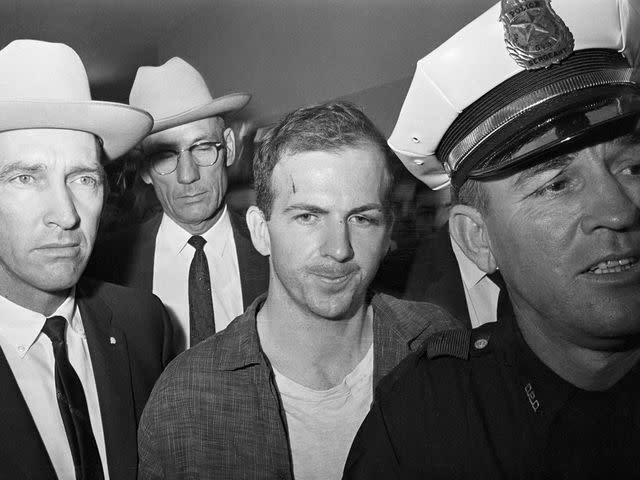
Bettmann
Lee Harvey Oswald is shown after his arrest here on November 22.Shortly after firing the shots that killed Kennedy, Oswald left the Dealey Plaza area. At about 1:15 p.m., Oswald shot and killed a Dallas police officer named J.D. Tippit, who had stopped Oswald because he fit a description of the assassin on a local street, according to the Warren report. He was arrested at approximately 2 p.m. in a local movie theater and charged with the murder of Tippit — and named a suspect in the assassination of the president. He was formally charged with assassinating JFK hours later, despite telling reporters outside police headquarters, “No, I’ve not been charged with that,” per CBS News.
But Oswald never faced trial for the charges. On Nov. 24, 1963, two days after the assassination and his arrest, Oswald was shot and killed by Dallas nightclub operator Jack Ruby in the basement of Dallas Police Headquarters. Oswald was in the process of being transferred to the Dallas County Sheriff’s Office when he was shot.
After a 10-month investigation, the Warren Commission concluded in September 1964 that Oswald was responsible for killing Kennedy and that he had acted alone. They were able to connect the murder weapon — a rifle found on the sixth floor of the Texas School Book Depository — to Oswald through purchase records, handwriting analysis, photographs and a palm print.
In 1979, the House Select Committee on Assassinations agreed that Oswald had assassinated JFK — but disagreed that he had acted alone. This statement only added fuel to the popular conspiracy theory that a second shooter was located on the grassy knoll of Dealey Plaza. However, that finding has since been discredited several times. In 2008, a team of experts determined that Oswald’s sixth floor location was the likely origin point of the bullet that killed Kennedy, according to NBC News.
For more People news, make sure to sign up for our newsletter!
Read the original article on People.

